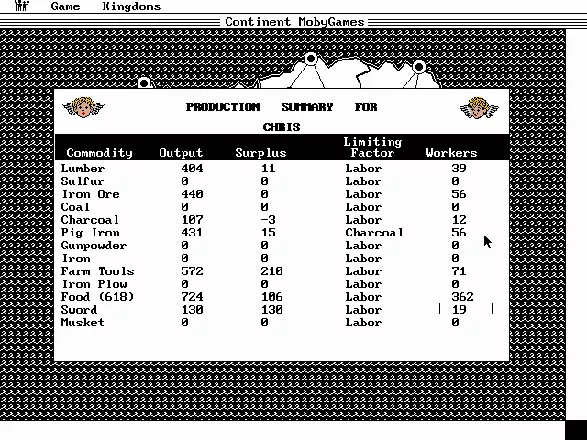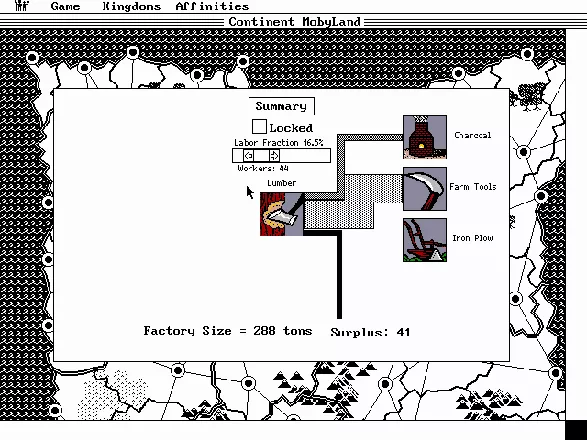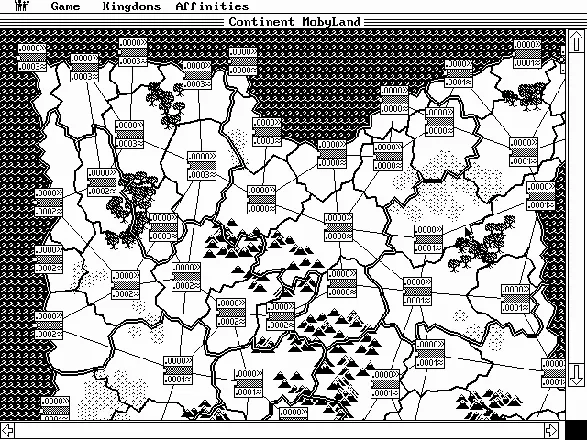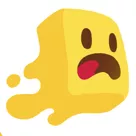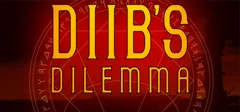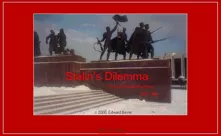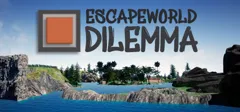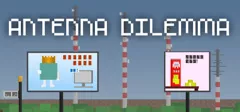The Global Dilemma: Guns or Butter
Description official description
Following Balance of Power, designer Chris Crawford stuck to the big-picture approach but shifted the focus from power politics to macroeconomics. In a grassroots simulation of industrial production and allocation, players balance a country’s military and social spending to survive in an environment of fictitious nations competing for land and resources.
Key element in the turn-based The Global Dilemma is a basic tree of industries such as coal mines, lumber mills or gunpowder factories. The entire production chain culminates in only two results: an increase in either military strength or population. Guns or butter.
The careful balancing and channelling of the industrial production, stripped down to the most basic mechanics, is The Global Dilemma’s fundamental challenge. A growing worker population is vital for the economy. A strong military is vital for conquering neighboring provinces, their resources and population.
At the same time, rivalling countries threaten the borders, and troops must be deployed to the vulnerable spots on the map. Superiority in numbers wins the abstract clashes of armies. The expert difficulty level adds a diplomacy system in which nations form short-term economic alliances.
The Global Dilemma sees Crawford refine his particular brand of socio-global simulations, reducing complex issues to basic cause-and-effects chains that have a distinctly educative edge. As usual, a well-written manual details the game’s mechanics. Crawford continued with Balance of the Planet (1990).
Screenshots
Credits (DOS version)
13 People (11 developers, 2 thanks)
| Design | |
| Program | |
| Artworks | |
| Editorial Support | |
| Manual Artworks | |
| Playtesting | |
| PC Version |
|
| Special Thanks to |
Reviews
Critics
Average score: 78% (based on 3 ratings)
Players
Average score: 3.0 out of 5 (based on 1 ratings with 0 reviews)
Be the first to review this game!
Trivia
Cover
The globe on the box cover looks like Earth on first glance, but isn't.
Development
These are Chris Crawford's designer notes from the manual:
This game took me eighteen months to complete, longer than my other games. I enjoyed the benefit of the best development tools I have ever used; hence it is safe to declare this is the most splendiferous product I have ever hammered together. At least, there is more “programmery stuff” in this game than in any game I have done yet.
Now, a player might not notice all the snazzy-keen things I stuck in. One reason that you might not have noticed them is that they’re not there! I ended up taking out much of the neat stuff I had once put in. Yes, it was painful, but there is a whole pile of stuff that was here yesterday and is gone today.
The best example is trade. I had an entire subgame devoted to trade. You could buy and sell your stuff to other players, deciding how much stuff you wanted to sell, haggling over the price, seeing what kind of deal you could make. And there was a “company store” that would buy your surpluses or make up your shortages, for the right price. There was money that you could accumulate over the course of the game – it was all quite elaborate. And two months before finishing the game, I ripped it all out. Egad!
Why, you may wonder, would a game developer rip out perfectly good stuff? Especially when that stuff is what marketing types like to call “fee-tyures”, the kind of things that they put on the back of the box in bulleted lists. So why did I do it?
The answer is simple: it wasn’t fun. Remember fun? That’s the stuff I’m supposed to be selling you. Trade worked. It provided a useful function in the game. But it did not really advance the “gaminess” of the game. It didn’t make the game any more fun. So out it went, and with it two months of hard work. That’s the games biz.
There were many other things I deleted from the game: transportation (you could build railroads, ships, wagons, etc. to move your stuff around); factories in each province; factories as capital assets; military power divided into infantry, cavalry, and artillery; nifty pie-chart controls for allocating workers (they weren’t fast enough); and lakes and seaports.
Then there are the features I put a lot of time into that few players will notice. Call it bad prioritization on my part. Consider, for example, the continent generation. My algorithms put together a map that has mountains, deserts, forests, roads, towns, and provinces. What is really surprising about this is that it actually works. Take it from a programmer who spent two months discovering every possible way that algorithms could create nonsensical continents. Provincial capitals floating in the middle of oceans. Provinces that are too big or too small. Mountain ranges that extend into the ocean. Roads leading to nowhere. It was rough, but the final result is pretty good. You might occasionally see a provincial capital clinging right on the very edge of a continent, but otherwise the algorithms run well. My only regrets are, first, that continents are a little too conservative – always boxy and simple. Second, the algorithms take far too long to build the continent. Try as I might, I could not speed them up enough. Ah, well.
Another cute stunt was the algorithm to create province names. Did you notice that each and every province has its very own name? And that there seem to be gazillions of them? Well, that’s because I worked long and hard on a clever little algorithm to create province names. It has some flaws in it, but it does work fairly well. But how many people will notice?
Lastly, there’s that face-display algorithm. In the Expert level game, the faces of the different players display a variety of different emotions. This is important stuff, because the human face is a fundamentally important medium for human communication. Until now, all we game designers could do was copy pre-drawn faces onto the screen. Since a pre-drawn face consumes a goodly amount of RAM and disk space, we could never afford to have many such small faces. What we really need is a way to slap any given expression onto any given face. That’s what this game has. Look for further developments in this area; it’s important.
Well, I have boasted enough, so now it’s time for a mea culpa. I will freely admit that the implementation of color leaves much to be desired. What every owner of a color display wants is a full-color high-resolution display. This creates major design problems. How does one create displays that work well with both color and black & white displays?
My solution was to colorize existing black and white images, instead of creating true color images. All the basic graphics are designed for black & white, but on the color display, color is added. This is bad enough (I call it the “Ted Turner color instead of Walt Disney color”) but it gets worse. The map (on the Macintosh II) is still in black & white. I went to the trouble of making a full-color map, but it consumed huge amounts of RAM and the scrolling was abysmally slow. I felt that the slow scrolling interfered with the game, so I axed the color map. Sorry about that.
Lastly, I would like to acknowledge the many people who helped with this game. It’s amazing how many people influenced this game one way or another. At a phenomenal meeting in December 1988, Dan Bunten made a suggestion that profoundly simplified an otherwise convoluted design. Dale Yocum made many suggestions on user-interface issues throughout the design process. Eric Goldberg weighed in with his comments on the overall game structure. Peter and Caitlin Mitchell-Dayton created magnificent artwork for the game (the cherubs are their favorite part). Amanda Goodenough drew the artwork for the appendix that follows this one. Carol Balkcom kept my feet within striking distance of the ground with her many common-sense suggestions. Susan Lee-Merrow and Gregg Williams playtested the game. Dave Menconi carried out in-depth playtesting and QA testing. And Kathy, my wife, suffered through hundreds of hours of creative angst, hand-wringing, and foaming at the mouth, all with good grace and a readily bent ear.
I’m really glad this project is finally over.
References
The back cover gives the last names of several world leaders of the 1980s: Gorbachev, Carlsson, Ceausescu, Thatcher, Honecker, Jareuzelski [SIC - should be Jaruzelski], Bush, Castro, Kaifu, Kohl. These refer to:
- Mikhail Gorbachev: Communist General Secretary of the Soviet Union from 1985 to 1991
- Ingvar Carlsson: Social Democratic Prime Minister of Sweden from 1986 to 1991 and 1994 to 1996
- Nicolae Ceausescu: Totalitarian President of communist Romania from 1965 to 1989
- Margaret Thatcher: Conservative Prime Minister of the United Kingdom from 1979 to 1990
- Erich Honecker: Socialist General Secretary of the German Democratic Republic (GDR) from 1971 to 1989
- Wojciech Jareuzelski: Socialist General Secretary of Poland from 1981 to 1989
- George Bush: Republican President of the United States of America from 1989 to 1993
- Fidel Castro: Socialist President of Cuba since 1959
- Toshiki Kaifu: Liberal Democtaric Prime Minister of Japan from 1989 to 1991
- Helmut Kohl: Conservative Chancellor of the Federal Republic of Germany (FRG) from 1982 to 1998
Analytics
Upgrade to MobyPro to view research rankings!
Identifiers +
Contribute
Are you familiar with this game? Help document and preserve this entry in video game history! If your contribution is approved, you will earn points and be credited as a contributor.
Contributors to this Entry
Game added by -Chris.
Macintosh added by Terok Nor.
Additional contributors: Patrick Bregger.
Game added December 20, 2004. Last modified April 4, 2024.


